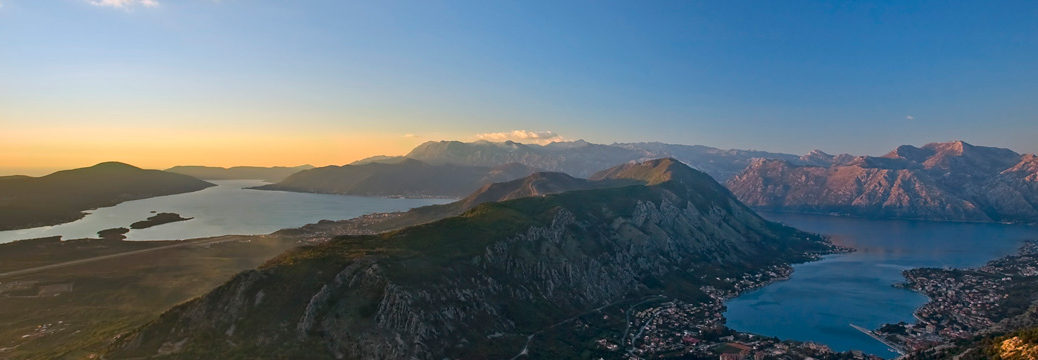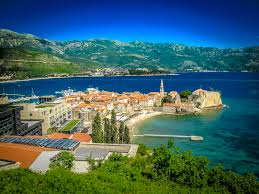
Montenegro makes it on the map
Montenegro has the attraction of being a sunny Mediterranean destination that lots of people would find hard to find on the map. But it won’t stay like that for long – and it certainly didn’t use to be the case. Hollywood stars used to take their luxurious breaks on the stunning coast of what is now one of Europe’s youngest and smallest nations when it was still part of Yugoslavia.
While there is much, much more to this country of just 600,000 people than the beaches, picturesque coastline and pretty historic ports, it is undoubtedly the coast that is the major draw. There are hiking trails in the virgin forests, ski resorts, lakes and mountains and an old capital city crammed with museums to explore. Montenegro has, for example, the largest lake in the Balkans and boasts being home to Europe’s last colony of pelicans. But I will have to take their word for it as I didn’t actually see any of the spectacular birds on Lake Skadar. The lack of particularly private pelicans was more than compensated by watching the aerial acrobatics of swifts swooping down for an early evening drink out of my hotel’s gorgeous affinity pool. Now that is my kind of bird watching. Squinting into the Mediterranean sun as my feathered friends delighted in sharing this super sized bird bath overlooking the Adriatic.
Budva
Kotor
Being linked to Serbia in the wake of the disastrous end of the last century Balkan wars and the consequent sanctions destroyed Montenegro’s tourist industry. But since the peaceful transition to independence in 2006 the visitors, like the swifts, are flocking back to this scintillating stretch of the Adriatic, following where the likes of Richard Burton, Sophia Loren – oh, and Marshall Tito – chose for their summer sojourns. Now the emphasis is not only on bringing the visitors back, flying in on the state carrier Montenegro Airways into Tivet Airport, but ensuring the hotels and apartments that are being constructed or reconstructed are high quality and not the costa calamities that scar much of the Mediterranean. That is not to say the main tourist destinations, such as Budva and Kotor, are without their entertainment, night life and popular appeal.
Yes, Montenegro can be a family destination with kilometre after kilometre of magnificent sandy beaches, including the longest beach on the Mediterranean coming at 14 kilometres and reaching into neighbouring Albania. It also knows how to make headlines such as bring Madonna to play on Jaz Beachand tour guides will tell you Catherine Zeta Jones has graced its shores, but then where hasn’t our Cath sunned herself?
It would be a shame not to sample the appeals of Montenegro beyond sun, sea and sand, including historic Venetian castles and medieval monasteries and walled port towns that switched being controlled by French, Russian, Venetian and Austro-Hungarian, all leaving their marks.
Then away from the coast we not only have Lake Skada, that vast freshwater domain of those Adriatic pelicans along with all manner of other birds both resident and migrating but three other national parks reflecting the country’s diverse environment. This ranges from snow capped mountains that in the winter host skiers in pristine chalet-style hotel such as Bianco in Kolasin, virgin forests that are home to black bears, wolves and even poisonous snakes such as the one we saw – from a distance – sunning itself on the road.
Being on a meeting point between West and East, Roman Catholicism and Orthodoxy, Christianity and Islam, Capitalism and Communism, you can also submerge yourself into the cultural reminders of the fast changing history of this land. The old capital of the Montenegrian kingdom Cetinje makes an intriguing afternoon’s visit. For only a few generations this was the grand centre of the state with a royal palace, imposing foreign embassies and all the trappings. On the formation of Yugoslavia the capital of Montenegro moved to what was named after the Second World War Titograd, today Podgorica, and Cetinje lost its raison d’être – the royal family as long gone anyway. Today it is a museum town. The palace is now an intriguing museum, charting the rise of the dynasty that at its peak King Nikola married off his daughters to the sons of the crowned heads of Europe. Across the way another building houses a surprising collection of art ranging from contemporary painters to the exquisite and well-travelled Christian relic Our Lady of Philerme, framed in gold and bejewelled with emeralds and rubies by the tsars on as top over in St Petersburg.
Between the coast and the heartland of the country is a jaw dropping road called the Serpantinas, with more hairpin bends than I cared to count culminating in a welcome stop in the village of Njegusi where the speciality cured ham Njeguski sir and ewe’s cheese Njeguski prsut is pleasantly washed down with the light and quaffable red wine.
The cuisine of the country reflect that geographical diversity from flapping fresh fish on the coast to grilled meats and hearty soups in the cooler mountains while the cured ham and ewe’s cheese available everywhere. Nightlife revolves around the cafe bars on the seafront and in the old towns and then, I am told, in the wee small hours in discos such as Tropicana in Budva and Maximus in Kotor.
But it is Budva and Kotor’s irresistible charm that is most intoxicating. Old ramparts built from the white local limestone, churches of different Christian denominations from Romanesque to baroque through to Orthodox, grand Venetian palaces and fortifications – with trendy modern bars in the squares where locals and tourists alike while away the time people watching. This magnificent stretch of coast runs from Albania from Croatia with Dubrovnik just a three hour bus journey – and day trip – away from Budva. But nothing in Croatia can compare with largest “fjord” in southern Europe – really a bay with deep inlets – sheltering the old maritime walled towns of Kotor and its small neighbours. And while the inland heart of the country is increasingly appealing to trekkers, nature lovers and the mountains to the skiers, it is undoubtedly the clear blue waters and plentiful beaches that are currently the big draw.
With the nation only three years old foreign capital is pouring into the new market for tourism development, whether that be marinas, an entire resort created out of the pictures small island of Sveti Stefan or the planned high rise Dubai-esque glass tower at Budva. That does mean there is a fair amount of construction work with road improvements also ongoing but certainly not at a level to detract from a holiday stay.
In fact, it probably is best to go now before the message really does get out that this is the Mediterranean destination that is reclaiming its place in the sun.

